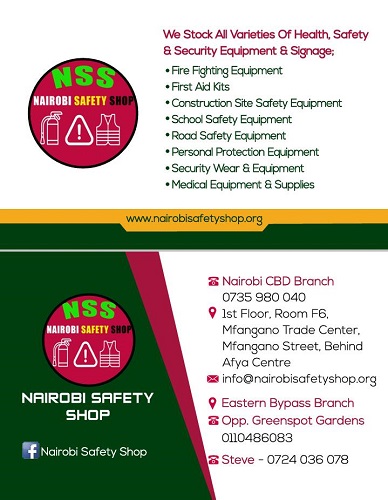Divorce and separation are some of the most challenging experiences a person can go through. They not only disrupt one’s life but also cause emotional, psychological, and sometimes physical distress. As an Intenational Encourager, Founder and President of Africa Youth Rescue Initiative(AYRI) and Author of Overcoming All Odds Book, I have a personal experience in this as a divorcee. This comprehensive article provides insights on how to navigate the painful journey of divorce and separation, offering hope, healing strategies, and practical steps toward rebuilding life. Let’s dive into understanding the intricacies of overcoming divorce and separation.
Introduction to Divorce and Separation
Divorce and separation are legally and emotionally complicated processes that signal the end of a marital or long-term relationship. The experience can bring overwhelming feelings of loss, failure, betrayal, anger, and fear of the future. Whether the separation is amicable or contentious, both parties often feel a significant emotional impact. For many, this time of life represents the collapse of dreams, expectations, and personal identity built around the relationship.
Divorce and separation affect various aspects of life, including family dynamics, finances, social circles, and mental health. It’s not just about ending a relationship but also restructuring one’s world in its aftermath. Healing from such a profound shift requires a multi-dimensional approach, including emotional support, financial reorganization, and spiritual recovery.
Types and Classifications of Divorce and Separation
Divorce and separation can occur in different ways depending on the circumstances and the legal or emotional context. Understanding the type of separation can help individuals approach the healing process with the appropriate mindset.
- No-Fault Divorce: Occurs when neither party is blamed for the breakup. The marriage is simply deemed irreparable.
- Fault Divorce: One party is blamed for the failure of the marriage due to reasons such as infidelity, abuse, or abandonment.
- Contested Divorce: When both parties disagree on issues such as child custody, property division, or spousal support.
- Uncontested Divorce: Both parties agree on all the terms of the separation, making the process smoother.
- Legal Separation: Couples live apart but remain legally married, often as a precursor to divorce or as a permanent arrangement due to religious or financial reasons.
- Trial Separation: Couples decide to live apart temporarily to evaluate whether divorce is the best option.
- Collaborative Divorce: Both parties work together with mediators or lawyers to negotiate the terms of their separation without going to court.
- Divorce After Long-Term Marriage: Involves couples who have been married for decades, often dealing with retirement or adult children issues.
- Gray Divorce: Divorce among older couples, typically above the age of 50, which has become a growing trend.
Causes of Divorce and Separation
- Infidelity: One of the most common causes of divorce, breaking the foundation of trust in a relationship.
- Poor Communication: Inability to resolve conflicts, leading to misunderstanding and emotional distance.
- Financial Strain: Money-related stress, often involving debt or incompatible financial goals.
- Lack of Intimacy: Emotional or physical disconnection can lead to dissatisfaction and resentment.
- Unrealistic Expectations: When one or both partners have expectations that are unattainable, it can strain the relationship.
- Abuse (Emotional or Physical): No marriage can survive an environment of abuse and trauma.
- Substance Abuse: Addiction issues can lead to instability, emotional neglect, and financial strain.
- Infertility or Disagreements about Children: Disputes about starting a family or dealing with fertility challenges.
- Cultural or Religious Differences: Conflicting belief systems can make coexistence difficult over time.
- Workaholism: When one partner is overly focused on their career, it can cause neglect in the relationship.
- Mental Health Issues: Untreated mental illnesses can deeply affect marriage, especially if one partner struggles with understanding or providing support.
- Differences in Parenting Styles: Disagreement on how to raise children can lead to major conflicts.
- Growing Apart: Over time, partners may develop different interests, goals, or values, leading to emotional distance.
- Family Interference: Excessive involvement from in-laws or family members can create tension.
- Lack of Commitment: If one partner is not fully invested, it becomes difficult to maintain a healthy relationship.
- Unresolved Conflict: Continuous arguments without resolution can create a toxic atmosphere.
- Boredom: A lack of excitement or passion in the relationship can lead to dissatisfaction.
- Sexual Incompatibility: A mismatch in sexual needs or desires can cause strain and lead to separation.
- Infantile Behaviors: Immaturity in dealing with responsibilities can erode trust and respect.
- Addiction to Social Media or Technology: Constant distraction from phones or the internet can diminish connection.
- Emotional Affairs: A non-physical affair that involves deep emotional connection outside the marriage.
- Unforgiveness: Holding grudges over past mistakes or failures.
- Lack of Personal Space: Being overly dependent or clingy can create tension.
- Career Changes: Job relocation or long hours can create distance, both physically and emotionally.
- Subtle Emotional Neglect: Failure to nurture the emotional needs of a partner over time.
Side Effects of Divorce and Separation
- Grief and Loss: Experiencing deep sorrow over the end of the relationship.
- Depression: Feelings of sadness, hopelessness, and loss of interest in life.
- Anxiety: Worrying about the future and feelings of uncertainty.
- Loneliness: Experiencing isolation, especially if the relationship was long-term.
- Lowered Self-Esteem: Questioning personal worth after being “rejected.”
- Fear of Future Relationships: Developing trust issues and fear of intimacy.
- Financial Hardship: Adjusting to living on a single income or dealing with alimony/child support.
- Physical Health Decline: Stress and emotional pain manifesting as physical illness.
- Social Isolation: Losing mutual friends or feeling excluded from previous social circles.
- Guilt: Feeling responsible for the breakup or the impact on children.
- Anger and Resentment: Harboring negative feelings toward the ex-partner.
- Parental Alienation: When one parent feels excluded from their children’s lives post-divorce.
- Legal Complications: Custody battles, alimony negotiations, and property disputes.
- Stress Over Custody: The pressure and emotional toll of co-parenting or losing custody.
- Shame and Stigma: Cultural or social judgment associated with divorce.
- Bitterness: Holding onto unresolved anger, which can impact future relationships.
- Identity Crisis: Losing a sense of self after being part of a “we” for so long.
- Trust Issues: Difficulty believing in future partners or close relationships.
- Sleep Problems: Insomnia or sleep disturbances due to stress and overthinking.
- Emotional Numbness: Suppressing emotions to cope with the pain.
- Poor Work Performance: Divorce-related stress affecting productivity at work.
- Relocation: Moving to a new city or home, disrupting stability.
- Parenting Struggles: Adjusting to single-parenthood or co-parenting dynamics.
- Rebounding Relationships: Rushing into new relationships to fill the emotional void.
- Legal Debt: Accumulating legal fees and court costs.
- Substance Abuse: Turning to alcohol or drugs to cope with the emotional pain.
- Aggression: Lashing out at others due to unresolved emotions.
- Spiritual Crisis: Questioning faith, purpose, or belief systems during the aftermath.
- Change in Family Dynamics: Children may suffer emotional consequences or pick sides.
- Regret: Reflecting on “what could have been” and second-guessing decisions.
Signs and Symptoms of Emotional Trauma from Divorce
- Sadness that Lingers: Persistent feelings of sadness that don’t seem to lift.
- Overwhelming Stress: Constant worry or fear about the future.
- Fear of Abandonment: Fearing further rejection or isolation.
- Lack of Energy: Feeling physically and emotionally drained all the time.
- Increased Irritability: Being quick to anger or frustration.
- Emotional Detachment: Feeling disconnected from loved ones or everyday activities.
- Avoidance of Social Situations: Pulling away from social gatherings or interactions.
- Loss of Interest in Activities: Disinterest in things that once brought joy.
- Physical Ailments: Manifesting emotional pain as physical problems like headaches or stomachaches.
- Difficulty Concentrating: Trouble staying focused at work or in daily tasks.
- Emotional Outbursts: Sudden, uncontrollable episodes of crying or anger.
- Heightened Sensitivity to Rejection: Feeling hurt by even minor slights.
- Hopelessness: A deep sense of despair about the future.
- Flashbacks of Arguments: Reliving the arguments and painful moments repeatedly.
- Guilt or Shame: Feeling bad about personal decisions, actions, or perceived failures in the relationship.
- Insomnia or Sleep Issues: Trouble falling asleep or staying asleep due to stress and overthinking.
- Appetite Changes: Either overeating or losing interest in food as a result of emotional turmoil.
- Overthinking: Constantly replaying the breakup in your mind and obsessing over “what went wrong.”
- Distrust: A general mistrust of others, especially in new relationships or friendships.
- Social Withdrawal: Isolating yourself from others, avoiding friends, and spending excessive time alone.
Latest Trends in Dealing with Divorce and Separation
- Co-Parenting Apps: Tools designed to help separated or divorced couples manage shared custody schedules and communicate effectively.
- Therapeutic Divorce Coaching: Hiring life coaches or therapists who specialize in guiding individuals through the emotional process of divorce.
- Mindfulness and Meditation: Practicing mindfulness to help reduce stress and cultivate emotional awareness during the separation process.
- Collaborative Divorce: Increasing trend of couples avoiding court battles by working together with mediators to settle issues amicably.
- Divorce Support Groups: Online and in-person communities for those experiencing divorce to share experiences and offer mutual support.
- Divorce Retreats: Specialized wellness retreats for individuals going through divorce, focusing on healing and recovery.
- Therapy for Children of Divorce: Growing focus on therapy specifically targeted to help children cope with their parents’ separation.
- Online Divorce Services: Simplifying the divorce process with online legal services that are cost-effective and efficient.
- Social Media Counseling: Using social media platforms to access counselors and therapists remotely for divorce recovery.
- Spiritual Counseling: Seeking spiritual guidance and counseling to reconcile the emotional trauma of divorce with personal faith and belief systems.
- Grey Divorce (Divorce after 50): Addressing the unique challenges of older couples separating after long-term marriages.
- Conscious Uncoupling: A more holistic approach to separation, emphasizing mutual respect, healing, and minimizing conflict.
- Alimony Trends: Changes in alimony laws that consider stay-at-home parents or lower-income spouses’ needs.
- Shared Parenting Models: Increased legal preference for 50/50 custody arrangements to ensure both parents play active roles in children’s lives.
- Men’s Divorce Counseling: More men are seeking counseling post-divorce to address emotional trauma and mental health challenges.
- Divorce Financial Planners: Professionals who specialize in helping individuals navigate the financial complexities of divorce.
- Divorce Wellness Programs: Comprehensive programs that offer emotional, physical, and financial support to those navigating separation.
- Digital Communities for Divorcees: Online platforms designed to connect individuals going through divorce, allowing them to share advice and experiences.
- Social Media Boundaries Post-Divorce: Growing awareness of setting boundaries with ex-partners on social media to avoid emotional triggers.
- Post-Divorce Therapy: Increased emphasis on post-divorce therapy as a critical step in rebuilding self-esteem and emotional resilience.
Ways to Overcome Divorce and Separation
- Acknowledge Your Pain: Give yourself permission to feel the emotional weight of divorce; it’s normal to grieve.
- Seek Professional Counseling: Engaging a therapist who specializes in divorce recovery can provide essential support during this transition.
- Join Support Groups: Sharing your journey with others who’ve experienced the same can create a sense of belonging and understanding.
- Focus on Self-Care: Practice self-care by nourishing your body, mind, and soul through healthy habits, exercise, and relaxation.
- Rediscover Your Identity: Rebuild your sense of self outside the relationship by exploring hobbies, interests, and passions you may have neglected.
- Set Healthy Boundaries: Establish emotional and physical boundaries with your ex to facilitate healing and avoid unnecessary conflict.
- Practice Mindfulness and Meditation: Help calm your mind and center yourself through meditation practices, focusing on inner peace and acceptance.
- Accept the End of the Marriage: Coming to terms with the finality of the divorce allows you to move forward rather than stay stuck in the past.
- Forgive Your Ex-Partner: Release the resentment by practicing forgiveness, not for them, but for your own emotional freedom.
- Forgive Yourself: Divorce can leave many people feeling guilty or regretful. It’s essential to be kind to yourself and release any self-blame.
- Limit Contact: Reduce interaction with your ex unless necessary, especially in the early stages of healing.
- Prioritize Your Children’s Well-being: If you have children, focus on creating a stable, loving environment for them.
- Create a Vision for the Future: Dream about what you want your post-divorce life to look like and take steps to make it a reality.
- Redefine Success in Relationships: View the end of your marriage not as a failure, but as a learning experience.
- Embrace Spiritual Growth: Lean into your faith, drawing strength and guidance from spiritual practices or communities.
- Surround Yourself with Positive People: Keep a strong, positive support system of friends and family who encourage you and uplift you.
- Reframe Your Narrative: Change how you talk to yourself about the divorce. Instead of feeling like a victim, tell a story of resilience and growth.
- Rebuild Financial Stability: Take control of your financial future by consulting a financial planner or making a budget.
- Focus on Your Career or Personal Growth: Use this time to advance in your career or pursue a personal project or passion.
- Move On at Your Own Pace: Healing from divorce isn’t linear, and there’s no set timeline for recovery. Go at your own pace.
- Celebrate Small Wins: Every step forward, no matter how small, deserves to be acknowledged and celebrated.
- Declutter and Redecorate Your Space: Create a new, uplifting environment that reflects your new chapter in life.
- Journal Your Thoughts: Writing down your feelings can help you process emotions and release pent-up thoughts.
- Relearn How to Trust: In time, allow yourself to trust others again and explore new relationships when you’re ready.
- Consider a Break from Dating: Give yourself time to heal before diving into a new relationship, avoiding “rebound” situations.
- Set New Goals: Identify short- and long-term goals that will help you create purpose and direction in your post-divorce life.
- Read Self-Help Books: Equip yourself with wisdom from self-help resources focused on overcoming divorce and finding healing.
- Practice Gratitude: Keep a gratitude journal to remind yourself of the good things in your life, even amidst the challenges.
- Engage in Physical Activities: Exercise, walk, or take up a new sport. Physical activity boosts endorphins and helps release stress.
- Consider Divorce Recovery Coaching: Hire a professional coach to help you navigate the emotional, financial, and logistical challenges of separation.
Conclusion
Overcoming divorce and separation is a profound emotional journey that takes time, patience, and intentional healing. Although the pain may seem insurmountable at first, there is hope for healing and happiness on the other side. By following practical steps, seeking support, and allowing yourself the grace to grieve and grow, you can rebuild your life stronger than before.
The key is to not rush the process—every individual’s journey through divorce is unique. Embrace this season as an opportunity for rediscovery, healing, and transformation.
To continue your journey toward healing, I encourage you to read more of my articles on mental health, emotional resilience, and overcoming adversity. You can also find insights in my books, Overcoming All Odds and Dare Not Quit, available at www.ambstevembugua.co.ke. Connect with me for more guidance and inspiration as we walk this path together toward healing and wholeness.
READ MORE




















[…] Dealing with Divorce and Separation […]